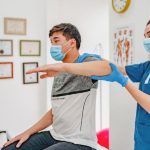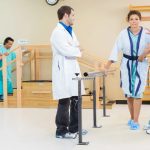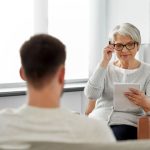You wake up in the hospital, your arm or leg does not move, your speech is blurry, and physicians say you have had an ischemic stroke. It can be scary and overwhelming. However, do not despair. Adequate rehabilitation, support by physicians and family, and your personal desire to recover can help to return your normal life. I also recommend watching video exercises for recovery after ischemic stroke to see how you can start your recovery journey right now.
Basics of ischemic stroke
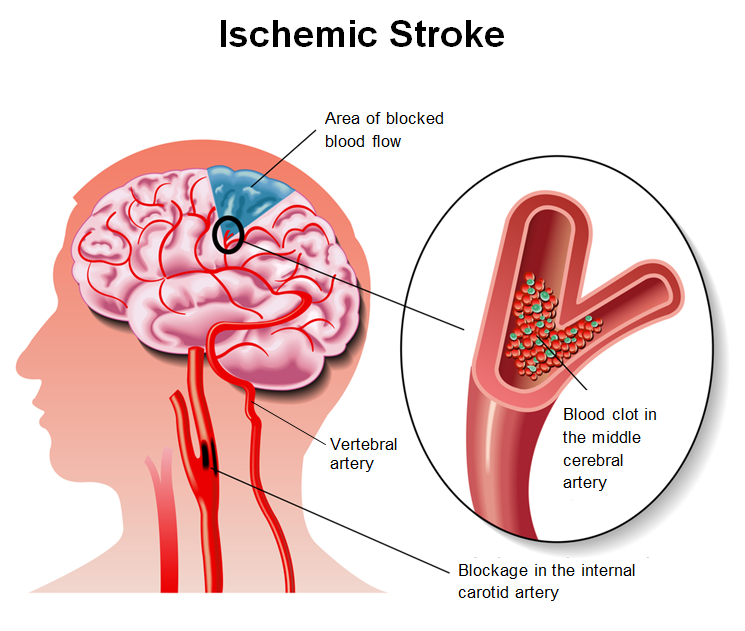
What is an ischemic stroke?
An ischemic stroke is a condition when blood stops flowing to a part of the brain due to a blockage in one of the arteries. This can lead to the loss of some brain functions, including speech, movement or vision.
Causes of ischemic stroke
An ischemic stroke is usually caused by the formation of a blood clot in the arteries of the brain or the separation of an emboli from another site in the body, which then travels to the brain. The risk of stroke increases with age, but is also associated with factors such as high blood pressure, diabetes, smoking and cardiovascular diseases.
Diagnostics and treatment of ischemic stroke
Ischemic stroke is diagnosed based on the clinical picture, MRI or CT scan of the brain. Treatment includes drugs that dissipate blood clots and sometimes surgery to restore blood circulation to the brain.
Early stage of rehabilitation after ischemic stroke
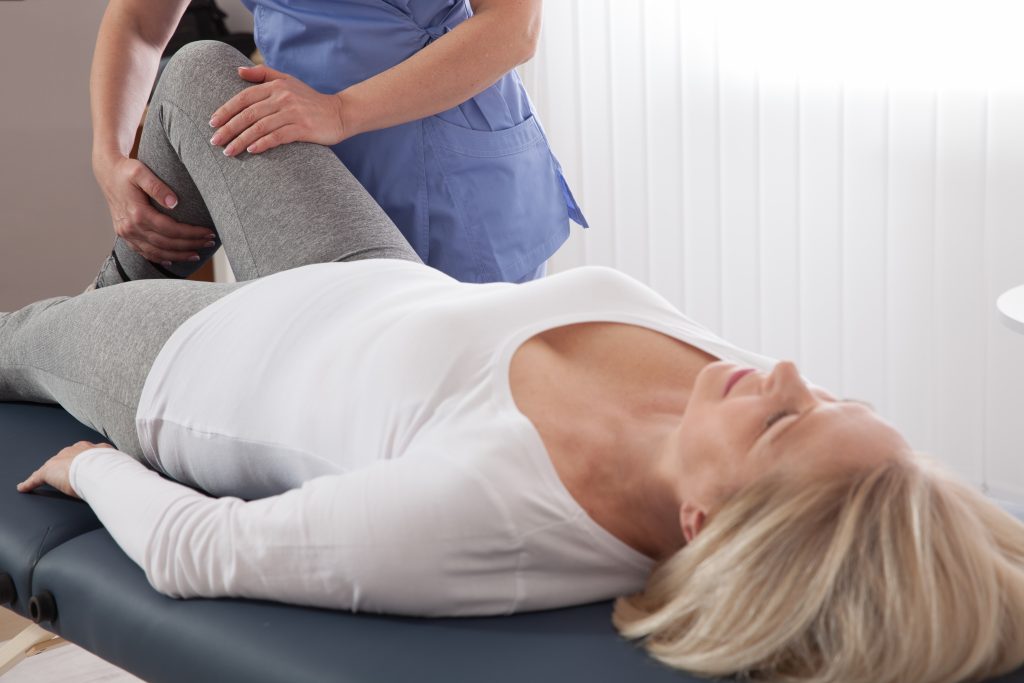
What to expect in the early period of rehabilitation
In the early period after a stroke, it is important to start rehabilitation measures as early as possible. This may include balance and coordination exercises, learning to use a walker or crutches, and speech therapy.
First steps to recovery
The first steps in rehabilitation include a physician’s evaluation of your health condition, level of functionality and need for care. Then an individualized rehabilitation plan will be developed, which may include physical therapy, speech therapy, and work with a psychologist.
Importance of early medical follow-up
Medical follow-up is important to evaluate the progress of recovery, adapt rehabilitation plan, and prevent and manage complications such as problems with breathing, digestion, urination, and blood circulation.
Video: “Rehabilitation after a stroke”
A set of exercises for rehabilitation of post-stroke patients. Set No1 is aimed at improving the functions associated with mobility in bed.
For additional information about the rehabilitation after a stroke you can watch a video demonstrating exercises and rehabilitation recommendations.
Physical therapy and stroke rehabilitation
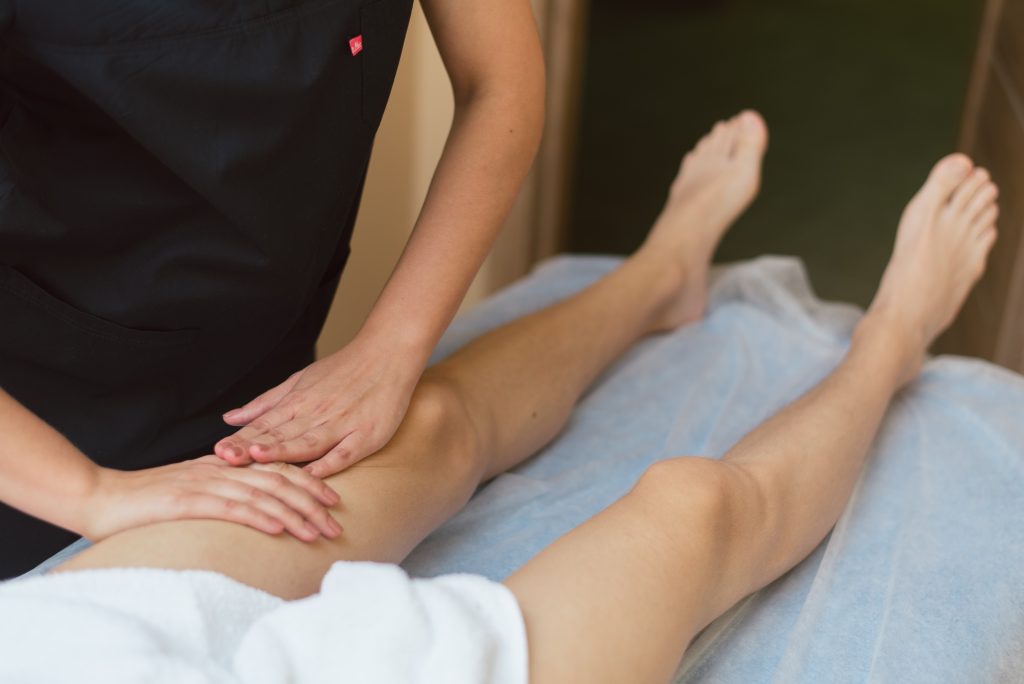
Importance of physical therapy in the recovery process
Physical therapy plays a key role in stroke recovery. It helps to improve motor function, balance and coordination, and promotes independence in daily life.
Types of exercises and their role in restoring body functions
Here are a few exercises that may be helpful when recovering from an ischemic stroke:
- Balance exercises. Stand next to a safe footing, such as a wall or chair that you can hang on if you lose your balance. Gradually raise one leg while staying on the other. Try to hold this position for 10-15 seconds, then slowly lower your leg back to the floor and repeat the exercise for the other leg.
- Flexibility exercises. Try to do muscle stretching exercises. For example, while sitting on a chair, slowly lean forward, trying to reach your toes. Stay in this position for a few seconds, then slowly return to the starting position.
- Strength exercises. Using an elastic brace or resistance band, you can perform a variety of strength exercises. For example, while sitting on a chair, fasten the band around your foot, then slowly move your leg to the side and slowly bring it back. Repeat the exercise several times.
- Coordination exercises. A soft ball can be a useful tool for coordination exercises. Try passing the ball gently from one hand to another, or while sitting, roll the ball from one foot to the other.
Be sure to consult your physician or physical therapist before starting any exercise program. They can help you adapt exercises to your individual needs and level of functionality. And remember, it is important to listen to your body and not overexert yourself while doing the exercises.
Gradual increase in loads and their regulation
It is important to increase the load gradually, taking into account your condition and sensations. It is important to listen to your body and not overexert yourself to avoid fatigue and injury.
Speech therapy and cognitive recovery
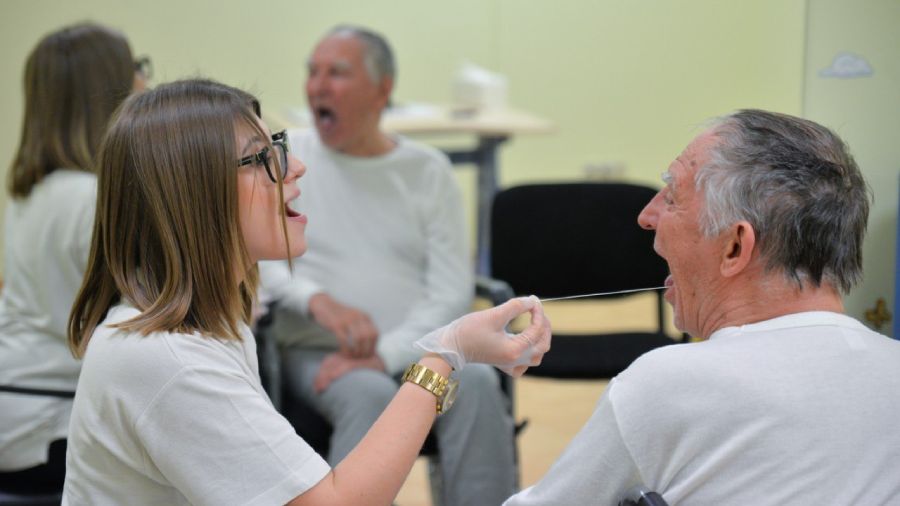
Speech recovery after ischemic stroke
A speech therapist can help you restore speech and language functions that may be affected after a stroke. This may include exercises in articulation, understanding and use of language.
Memory and attention training
Working with a psychologist or neuropsychologist can help restore cognitive functions such as memory, attention, spatial orientation, and time.
Psychological support during the rehabilitation process
Psychological support is important for coping with emotional reactions such as fear, anxiety, depression that can occur after a stroke.
Diet and lifestyle after stroke

Importance of adequate diet for recovery
Diet plays an important role in coronary stroke recovery because it provides the body with the nutrients it needs to recover and maintain health. Below is a list of foods that are useful during this period:
Fruits and vegetables: They are rich in antioxidants, vitamins, and minerals that can help the body recover. They also contain plenty of water and fiber, which help maintain normal digestion.
Fatty fish, such as salmon and herring: They contain omega-3 fatty acids, which can help reduce inflammation and support heart and brain health.
Whole grains like brown rice and buckwheat: They provide plenty of fiber and B vitamins that help maintain health of the nervous system and energy metabolism.
Protein: It is found it in foods such as chicken, turkey, fish, eggs, legumes, and nuts. Protein is essential for repairing tissues and maintaining muscle mass.
Dairy: Milk, yogurt and cheese are rich in calcium and vitamin D, which are important for bone and nervous system health.
Nuts and seeds: They contain healthy fats, proteins, and vitamins, including vitamin E, which can help protect cells from damage.
Iron-rich foods: such as beef, pork, chicken, dark green leafy vegetables, and legumes. Iron is essential for the formation of new red blood cells and can help improve energy levels.
Your diet should be balanced and varied to provide all the nutrients you need. Consulting with a dietitian can be helpful to develop a meal plan that fits your individual needs.
Role of rest and sleep in the recovery process
Adequate rest and quality sleep play an important role in the recovery process. They help the body recover and improve general health.
Lifestyle modification after ischemic stroke
After a stroke, lifestyle changes may be needed to reduce the risk of another stroke. This can include stopping smoking, managing stress, regularly exercises and adherence to a healthy diet.
Returning to normal life after a stroke
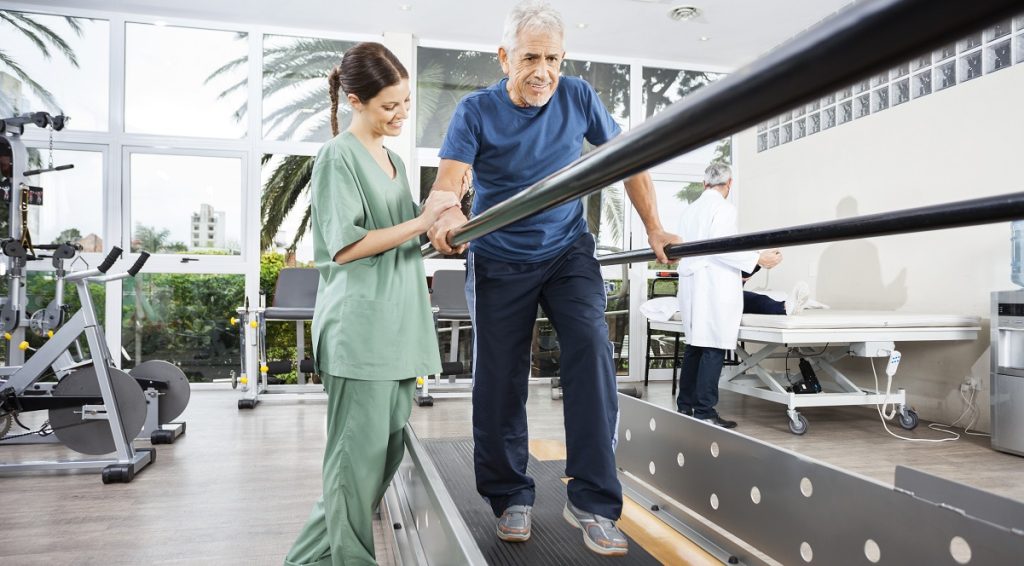
Adaptation to everyday life and work
Stroke recovery is a process, and it is important to learn to live with possible limitations. Some people may be able to return to work and normal activities quickly, while others may need more time and support.
Social adaptation and reintegration into society
Getting involved in social life and connecting with other people helps with recovery. In addition to the support from family and friends, support from groups and communities can help cope with life changes.
Long-term health and self-care after stroke
After the stroke, it is necessary to continue to monitor your health, undergo regular medical examinations and follow physician recommendations for self-care.
Conclusion
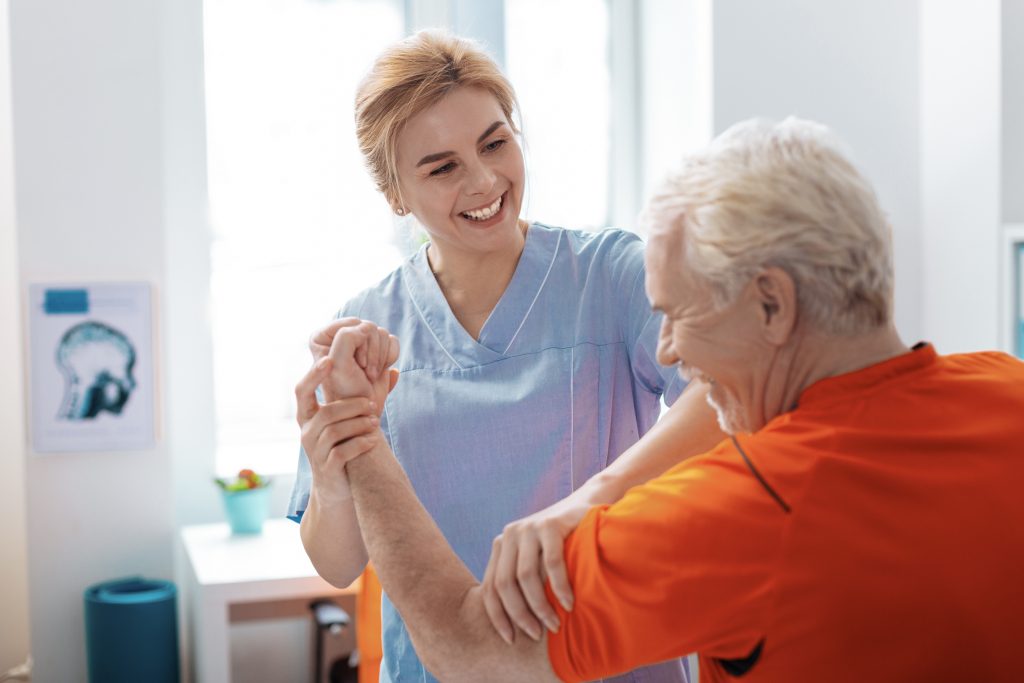
Importance of rehabilitation after ischemic stroke
Rehabilitation after a stroke is important for the return to an independent and fulfilling life. It helps to improve physical functions, restore speech and cognitive functions, and cope with psychological changes.
Continue to follow the recommendations of physicians and therapists, participate in regular medical examinations, and monitor your health. This will help you recover and lead a healthy and active life after a stroke.
The last but not least step in your recovery process is learning and practicing exercises that can be done at home. I highly recommend watching the video exercises for recovery from the stroke and starting your recovery journey today.

Check out the demo version of our workouts for rehabilitation of post-stroke patients on YouTube
Our website presents sets of exercises for the rehabilitation of post-stroke patients in the following areas:
-
A SET OF EXERCISES FOR REHABILITATION OF POST-STROKE PATIENTS. SET №1 IS AIMED AT IMPROVING THE FUNCTIONS ASSOCIATED WITH MOBILITY IN BED
-
EXERCISES FOR REHABILITATION OF POST-STROKE PATIENTS. SET №2 IS AIMED AT IMPROVING THE MOBILITY AND STABILIZATION OF THE PELVIC COMPLEX
-
A SET OF EXERCISES FOR REHABILITATION OF POST-STROKE PATIENTS. SET №3 IS AIMED AT IMPROVING THE MOBILITY AND FUNCTION OF THE UPPER LIMB, STABILIZING THE SHOULDER GIRDLE
-
A SET OF EXERCISES FOR REHABILITATION OF POST-STROKE PATIENTS. SET №4 IS AIMED AT IMPROVING THE MOBILITY AND FUNCTION OF THE LOWER LIMB, STABILIZING THE PELVIC GIRDLE
You may also find useful information and sets of exercises in the section APHASIA AND DYSARTHRIA, where 5 sets of exercises for rehabilitation for speech disorders are currently presented.


